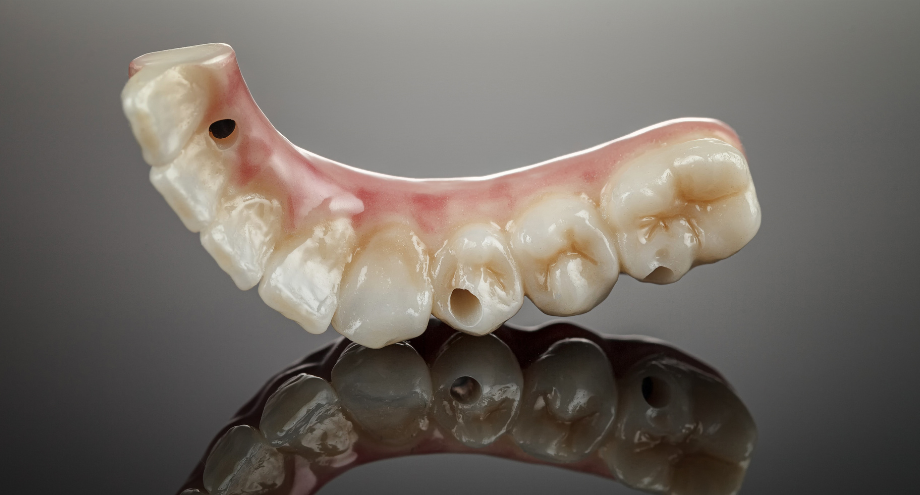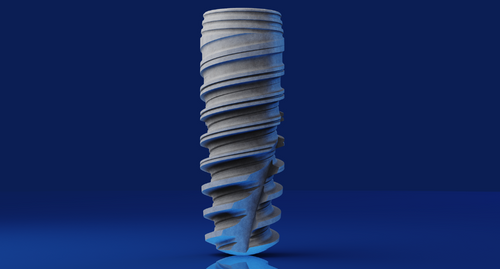Constant research and the implementation of the latest technology in implantology processes have contributed to a significant increase in the success rate of implant treatments, as well as making procedures more comfortable for patients and more predictable for professionals.
How to achieve success in implant treatments?
The new era of implant dentistry is marked by a high success rate in implant treatments, something that has been possible thanks to the development and improvement of new tools, techniques and procedures.
In this article, we will take a closer look at some of the most relevant ones.
Transepithelial abutments for restorations without bone loss or microleakage
The role of prosthetic components is decisive for the aesthetic and functional success of implant treatments, both in the short and long term. For this reason, transepithelial restoration has become one of the most recurrent practices in implantology.
Intermediate abutments offer numerous advantages in oral rehabilitations, including:
- Correction of angulations and improved precision.
- Ensuring a perfect fit of the prosthesis.
- Prevention of soft tissue loss.
To offer an answer to any clinical situation, Ziacom has two options for carrying out oral restorations with transepithelial abutments: Basic for single cases and XDrive for multiple restorations.
While the Basic intermediate abutment features a narrow diameter and anatomical emergence profile for the best soft tissue adaptation, the XDrive abutment facilitates provisionalization for predictable and aesthetics results.
Immediate loading: aesthetics and function on the same day
With immediate loading, 100% of patients want to shorten treatment times and thus accelerate the process to enjoy the final results as soon as possible. We can make this possible thanks to immediate loading.
This technique has countless benefits, including the preservation of soft tissue, which is essential for the final aesthetics of the treatment, almost instantaneous functionality and comfort, and a short post-operative period.
Although it is not a technique suitable for all patients, the topographical and morphological characteristics of our Galaxy implant make it suitable for the vast majority of clinical profiles.
Bone expanders: the surgeon’s allies for complex restorations
Bone expanders are an extremely useful tool in implantology, as they make it possible to restore complex areas of the oral cavity which, without them, would not be possible to restore. Their use in surgery with dental implants greatly increases the success rate of treatments, and also makes immediate loading possible.
The Ziacom Bone Expander kit offers expanders with progressive diameters for the dentist to use consecutively to achieve compression and expansion of the bone.
Bone regeneration: membranes and grafts
Another key tool for successful dental implant treatment is the use of bone grafts and bone membranes.
The most recent advances in this field have made it possible to develop materials more resistant, durable and, most importantly, biocompatible. These are materials with the ability to stimulate bone regeneration and increase the amount of bone available prior to dental implant placement.
The use of these filling materials in implant surgery improves the predictability and safety of treatments.
Full Digital Immediate loading treatment on the same day
With the advance of technology, more and more dental clinics are implementing digital protocols for the treatment of their patients.
Full digital same-day treatment combines all the benefits of digitalisation and is the right choice if we want to offer a fast, efficient and predictable surgical procedure.
Using the latest technology, this treatment helps the professional to plan the procedure so that it can be performed in a single session. This reduces treatment times and the number of clinic visits required by the patient.
At Ziacom we count on the Di²gital Arch digital impression system, which acts as a fixed reference structure to facilitate the alignment and overlaying of the virtual files obtained by intraoral scanner in different clinical situations in the same patient.
This digital system, especially indicated for the immediate full digital treatment of the total edentulous, facilitates the production of immediately loaded full digital prostheses on the same day.
Guided and robotic surgery: the future of implantology
Although still a developing technology, robotic surgery has already begun to be used for implant surgery.
Thanks to the use of a surgeon-controlled robot to perform the surgery, the procedure is even more precise and even less invasive than conventional surgery and is focused on minimising both pain and patient recovery times.
Much more advanced are guided surgery procedures, where, thanks to the use of surgical guidance, the intervention is a predictable, precise process with excellent results.
Surface treatments for implants: optimal osseointegration
Achieving greater stimulation of bone healing and improved biocompatibility between bone and implant are some of the fundamental issues in implantology and the main keys to successful osseointegration.
As part of our firm commitment to R&D&I, we have worked together with the Biointelligence Systems research group to develop an innovative surface treatment for our implants: Titansure Active is a revolutionary surface treatment that improves bone-to-implant assimilation times and also reduces the postoperative inflammatory process.




